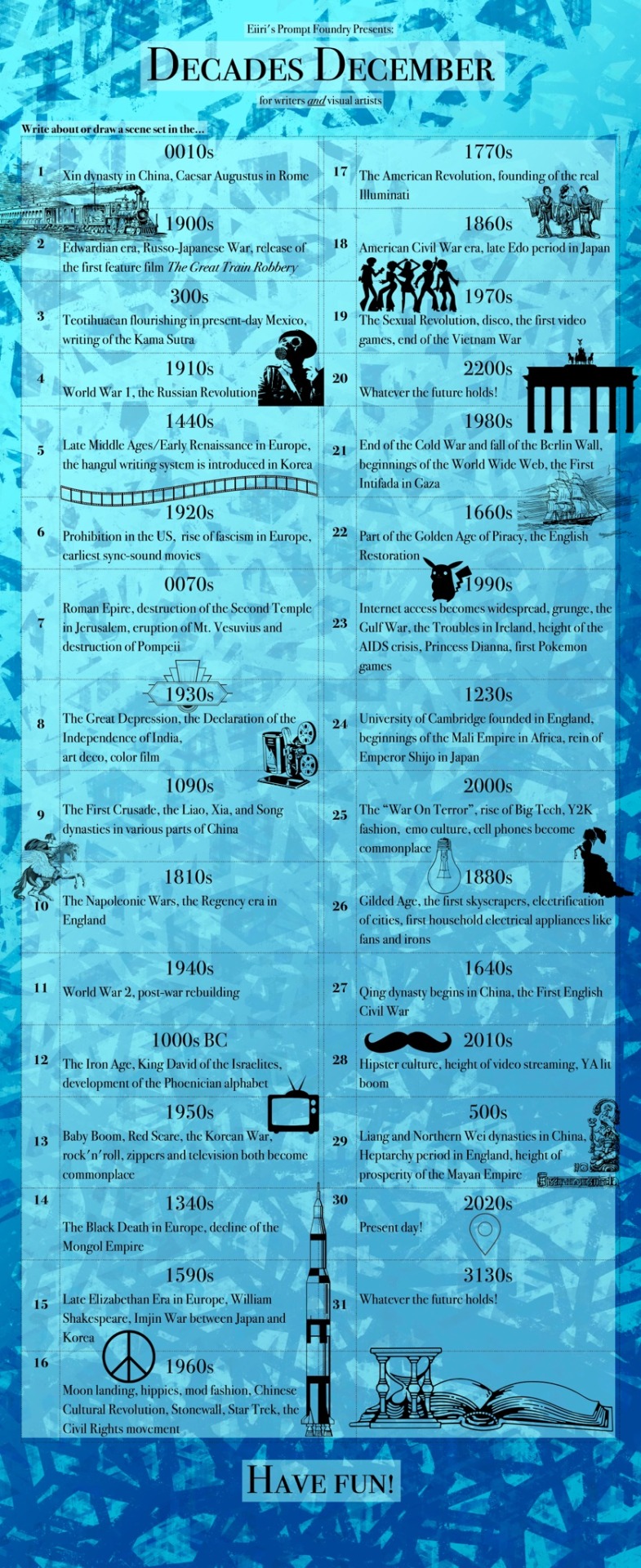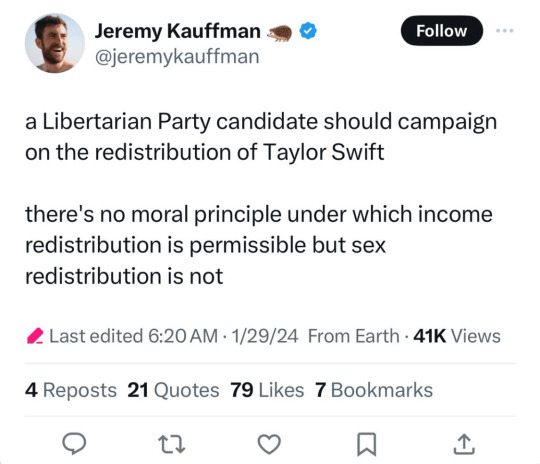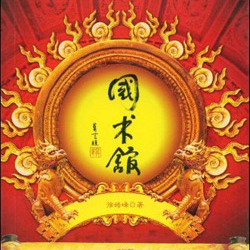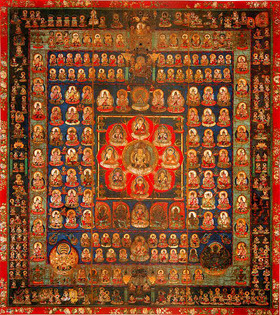#between japan and china 2010
Explore tagged Tumblr posts
Text


"Bahrain GP (1st Race): 4th place (Bahrain International Circuit) – Narrowly missing the podium." - april 8, 2024 📷 @.sebastianvettel / instagram
#sebastian vettel#f1#formula 1#bahrain gp 2010#flashback fic ref#flashback fic ref 2010#bahrain#bahrain 2010#bahrain 2010 day unknown#fic ref#fic ref 2024#not a race#2024 not a race#between japan and china 2010
19 notes
·
View notes
Note
I visited Japan and China recently. In Japan, I had a lot of fun riding the 'JR' Shinkansen from Osaka to Tokyo. In China, I had lots of fun riding the 'CR' bullet trains all over the beautiful countryside. However, I'm now back here in the stateside, and I have a burning question...
How come the USA doesn't have commercial passenger bullet train service?
I thought we were to greatest country on earth, according to a certain billionaire former president of ours who is now fighting to keep himself out of prison and trying in vain to get himself back into power (he wants the one P not the other P). If all the other major global powers and some non-powers have bullet trains, and we're supposedly the greatest country on earth, why do we in the USA do not have even one bullet train???
Kudos in advance for answering this question as quickly as you can.
There are several reasons but lets look at 4, Firstly, in the early 2010s, there was a push for High-speed Rail, The Obama Administration even promised to pay for several projects, most notably High-speed Rail between Chicago and Minneapolis, but the Governor of Wisconsin told Obama that he didn't want the money to build high speed rail.
Next there's the California High-speed Rail project which is currently building High-speed Rail between LA and San Francisco, due to outdated environmental laws, and constant suing from land owners in the central valley, the project took years to begin construction and is going wildly over budget and isn't expected to finish with phase 1 till the late 2030s
Florida in the 80s through to the 2000s had plans for HSR between Miami and Tampa, but that was canceled due to Rick Scott being against the project and the Florida East Coast Railway refusing to cooperate
Finally there is the Northeastern Acela Corridor, which has some high speed sections but hasn't been able to increase speeds on much of the track due to local opposition and a lack of funding, there will be some newer trains somewhat soon though that will increase speeds
100 notes
·
View notes
Text
2009 Reference Guide to Seb's Hair(Long post w lots of pics):
I would rate these but I love every version of him too much so I cannot pick 🤭, I'll add some commentary though. This took a horrible amount of time but it was also a great excuse to download and show off a truly terrible amnt of Seb pics(I was in tears half the time bcs of cuteness agression)
0. Testing(Jerez)(February 10th-12th):

Honestly such perfect Seb hair, I find this soooo cute!!! His hair is honestly always so perfect at Jerez testing every season. I love the length and style, he looks so incredibly pretty <3
1. Australia(March 26th-29th):

And now he is...bald. I actually kinda love this hair, he's my little kiwi fruit!! But I also can't help but mourn the Jerez hair. I'm just like: why did you feel the need to go bald, Seb??? It makes him look so young!
2. Malaysia(April 2nd-5th):

3. China(April 16th-19th):

I think the highlight of his bald era is how much he embodies the nickname "sunshine." Like the way his hair and eylashes glow in the sun??? Literally sunshine. Also it's cute to see his hair grow more fluffy
4. Bahrain(April 23rd-26th):

The texture differences are so interesting, I think this length looks its best when it's more fluffy like in the top right pic.
5. Spain(May 7th-10th):

It's funny how his hairline does that point in the middle, again: looks better when he looks unkempt
6. Monaco(May 21st-24th):

Weirdly shocked at how much his hair grew in-between Spain and Monaco??? Also I forgot that those fashion pics were from this weekend, and I was jumpscared by his mohawk look. I think he should keep away from hair product hahaha
7. Turkey(June 4th-7th):

Lego hair looking ass. Kidding kidding, just think his hair looks best all natural
8. Silverstone(June 18th-21st):

Lowkey kinda baffling to me how different his hair looks at different stages of the weekend. The podium hair especially is just soooo different, its very cute but yeah idk
9. Germany(July 9th-12th):

I did not realize he cut his hair again during this season?? Seeing these was very surprising to me, I had thought he grew it out for the entire season but I guess not! But I guess if he hadn't gotten a haircut the entire season, he'd probably have his angelic curls of 2010 by the end
10. Hungary(July 23rd-26th):

Kinda love the looks he was serving this weekend, it's just very spikey and cute(also the cunty sunglasses!!
11. Valencia(August 20th-23rd):

12. Belgium(August 27th-30th):

That garage lighting makes his hair look soooo much more yellow rather than his fair blond in the sunlight
13. Italy(September 10th-13th):

This transitional growing period is not my fav, just the way his hair sweeps in is funny
14. Singapore(September 24th-27th):

Looking particularly blond this weekend!! His hair is just very light and pretty
15. Japan(October 1st-4th):

I think most of these are from post-quali and for good reason; I love the way it looks like he has highlights in all the bottom pics
16. Brazil(October 15th-18th):

I love his scruffiness from this weekend!!! The scruffy stubble is sooooooo!!!
17. Abu Dhabi(October 29th-November 1st):

Pretty cute I think but yeah like nothing can really compete with his hair length in 2010 for me so I look at these and I'm like, ooooo growing longer!!
Conclusion: I think it's fun to get to see the process of someone's hair growing out. I've noticed that a lot of men with short hair get very consistent haircuts to keep their hair generally the same length, and I think that's so boring!! I think it's great to grow out your hair for a few months time because you get to see yourself at all the different stages and experiment with all kinds of different looks! So yeah, props to Seb for serving all kinds of looks this season!!
Also it's always interesting to me how much hair length/style and facial hair can change a person's look, but particularly how old/young they look. Like when he shaved his his head, it made him look so young. But in Brazil for example, with the longer hair and scruffy facial hair, he def looks older!
And of course, let me know which you like the best :D My favorite is Jerez <3
#i need a tag for posts like these which is just:#normal posts that catie normally makes in a normal fashion(not deranged)#this is mainly just ref for me#and for people like me who feel the urge to be ultra specific in everything they create#hope this was interesting for people who are not just me!!#i love how I originally foolishy tried to make this in one night. so naive.....#okay anyways posts i wanna make in this same vein:#more seb hair guides obv(guys idk if you knew but im very normal abt his hair)#id like to try and categorize all his 2009 and 2010(and before) helmets since theyre not on his website and i love them a lot#this would take a horrendous amnt of time but id love to try and make a guide of all nando's facial hair(hes had so many wild ones okay)#and then i wanna rate all the rbr race suits bcs i think about them *so often* and i have many thoughts#sebastian vettel#sv5#f1#formula 1#formula one#catie.rambling.txt#we do a little bit of f1#normal posts that catie normally makes in a normal fashion
214 notes
·
View notes
Text

Calling all history nerds, period piece connoisseurs, and fans of time-travel plots! Decades December is coming up here at The Prompt Foundry!
This list is being posted a little earlier than usual because historical work can take some time. The list has some reference points for you to jump off from. Show off your special interest in a particular era or event, or start a wiki walk from the the Wikipedia page for each decade to learn something new!
Have fun exploring resources like @thetimelinesofslang, the Fashion History Timelines from NYSU's Fashion Institute of Technology, or the fashion plates and historical photos from blogs like @omgthatdress or @historical-fashion-polls!
If you use this list, please tag me here @thepromptfoundry, I’d love to see your writing and art!
Feel free to combine different days' prompts with each other, or combine them with other events! Use your OCs, your favorite characters from media, your own experiences, whatever tickles your fancy.
Respond to as many prompts as you want or as interest you, don’t worry about missing or skipping any. Remember, this is supposed to be fun!
If you have any questions or musings, check our FAQ, and if you don't find your answer, shoot me an ask.
Plain text list below the cut:
1) 0010s Xin dynasty in China, Caesar Augustus in Rome
2) 1900s Edwardian era, Russo-Japanese War, release of the first feature film The Great Train Robbery
3) 300s Teotihuacan flourishing in present-day Mexico, writing of the Kama Sutra
4) 1910s World War 1, the Russian Revolution
5) 1440s Late Middle Ages/Early Renaissance in Europe, the hangul writing system is introduced in Korea
6) 1920s Prohibition in the US, rise of fascism in Europe, earliest sync-sound movies
7) 0070s Roman Epire, destruction of the Second Temple in Jerusalem, eruption of Mt. Vesuvius and destruction of Pompeii
8) 1930s The Great Depression, the Declaration of the Independence of India, art deco, color film
9) 1090s The First Crusade, the Liao, Xia, and Song dynasties in various parts of China
10) 1810s The Napoleonic Wars, the Regency era in England
11) 1940s World War 2, post-war rebuilding
12) 1000s BC The Iron Age, King David of the Israelites, development of the Phoenician alphabet
13) 1950s Baby Boom, Red Scare, the Korean War, rock'n'roll, zippers and television both become commonplace
14) 1340s The Black Death in Europe, decline of the Mongol Empire
15) 1590s Late Elizabethan Era in Europe, William Shakespeare, Imjin War between Japan and Korea
16) 1960s Moon landing, hippies, mod fashion, Chinese Cultural Revolution, Stonewall, Star Trek, the Civil Rights movement
17) 1770s The American Revolution, founding of the real Illuminati
18) 1860s American Civil War era, late Edo period in Japan
19) 1970s The Sexual Revolution, disco, the first video games, end of the Vietnam War
20) 2200s Whatever the future holds!
21) 1980s End of the Cold War and fall of the Berlin Wall, beginnings of the World Wide Web, the First Intifada in Gaza
22) 1660s Part of the Golden Age of Piracy, the English Restoration
23) 1990s Internet access becomes widespread, grunge, the Gulf War, the Troubles in Ireland, height of the AIDS crisis, Princess Dianna, first Pokemon games
24) 1230s University of Cambridge founded in England, beginnings of the Mali Empire in Africa, rein of Emperor Shijo in Japan
25) 2000s The “War On Terror”, rise of Big Tech, Y2K fashion, emo culture, cell phones become commonplace
26) 1880s Gilded Age, the first skyscrapers, electrification of cities, first household electrical appliances like fans and irons
27) 1640s Qing dynasty begins in China, the First English Civil War
28) 2010s Hipster culture, height of video streaming, YA lit boom
29) 500s Liang and Northern Wei dynasties in China, Heptarchy period in England, height of prosperity of the Mayan Empire
30) 2020s Present day!
31) 3130s Whatever the future holds!
#the prompt foundry#Decades December 2024#history#historical fashion#historical fiction#prompt list#drawing prompt#writing prompt#art prompt#writing challenge#writing inspiration#drawing challenge#drawing inspiration#art challenge#art inspiration#speculative fiction#time travel#period piece
19 notes
·
View notes
Text

Most mar a garbage day is megirta (egybol ossze is omlott a site)
Over the weekend, the always-excellent John Burn-Murdoch, over at The Financial Times, posted an alarming bit of demographic analysis that has now gone very viral. It’s from a column Burn-Murdoch wrote titled, “A New Global Gender Divide Is Emerging,” which shows a tremendous political gap forming between young men and women around the world.
Burn-Murdoch followed up the column with a lengthy thread on X hypothesizing as to what may be causing this gap and thousands of other users have offered up their own diagnoses, as well: Smartphones, video games, economic inequality, lack of education, an over-correction post-#MeToo.
Interestingly enough, though, the bulk of Burn-Murdoch’s reporting focuses on South Korea, the US, Germany, the UK, Spain, Poland, China, and Tunisia. Which, aside from China and Tunisia, were all countries I worked in, covering elections and far-right radicalization, in and around the time period those countries’ respective political gender gaps began widening. I’m not saying I have a tremendously in-depth understanding of, say, Polish toxic masculinity, but I did spend several days there following around white nationalist rappers and Catholic fundamentalist football fans. And, in South Korea, I worked on a project about radical feminists and their activism against the country’s equivalent of 4chan, Ilbe Storehouse.
In fact, between 2015-2019, I visited over 20 countries, essentially asking the same question: Where do bad men here hangout online? Which has given me a near-encyclopedic directory in my head, unfortunately, of international 4chan knock-offs. In Spain, it’s a car forum that doxxes rape victims called ForoCoches. In France, it’s a gaming forum that organized rallies for Marine Le Pen called Jeux Video. In Japan, it’s 2channel. In Brazil, it’s Dogolachan. And most, if not all, of these spaces pre-date any sort of modern social movement like #MeToo — or even the invention of the smartphone.
But the mainstream acceptance of the culture from these sites is new. Though I don’t actually think the mystery of “why now?” is that much of a mystery. While working in Europe, I came to understand that these sites and their culture war campaigns like Gamergate were a sort of emerging form of digital hooliganism. Nothing they were doing was new, but their understanding how to network online was novel. And in places like the UK, it actually became more and more common in the late-2010s to see Pepe the Frog cosplayers marching alongside far-right football clubs. In the US, we don’t have the same sports culture, but the end result has been the same. The nerds and the jocks eventually aligned in the streets. The anime nazis were simply early adopters and the tough guys with guns and zip ties just needed time to adapt to new technology. And, unlike the pre-internet age, unmoderated large social platforms give them an infinitely-scalable recruitment radius. They don’t have to hide in backrooms anymore.
Much of the digital playbook fueling this recruitment for our new(ish) international masculinist movement was created by ISIS, the true early adopters for this sort of thing. Though it took about a decade for the West to really embrace it. But nowadays, it is not uncommon to see trad accounts sharing memes about “motherhood,” that are pretty much identical to the Disney Princess photoshops ISIS brides would post on Tumblr to advertise their new life in Syria. And, even more darkly, just this week, a Trump supporter in Pennsylvania beheaded his father and uploaded it to YouTube, in a video where he ranted about the woke left and President Biden. Online extremism is a flat circle.
The biggest similarity, though, is in what I can cultural encoding. For ISIS, this was about constantly labeling everything that threatened their influence as a symptom of the decadent, secular West.

(X.com/jeremykauffman)
Taylor Swift, an extremely affluent blonde, blue-eyed white woman who writes country-inflected pop music and is dating a football player headed for the Super Bowl. She should be a resounding victory for these guys. Doesn’t get more American than that. But due to an actually very funny glitch in how they see the world, she’s actually a huge threat.
Pop culture, according to the right wing, should be frivolous. Because before the internet, it was something sold to girls by corporations run by powerful men. Famous pop stars through the ages, like Frank Sinatra, America’s first Justin Bieber, or The Beatles, the One Direction of their time, would be canonized as Great by Serious Men after history had forgotten they rocketed to success as their generation’s Tumblr Sexymen. But from the 2000s onward, thanks to an increasingly powerful digital public square, young women and people of color were able to have more influence in mainstream culture and also accumulate more financial power from it. And after Barack Obama’s 2008 presidential campaign was able to connect this new form of pop influence to both liberal progressive politics and, also, social media, well, conservatives realized they had to catch up and fast. And the fastest way to do that is to try and smash the whole thing by dismissing it as feminine.
Pop music? It’s for girls. Social media? It’s for girls. Democrats? Girls. Taylor Swift? Girls and also a government psyop. But this line of thinking has no limit. It poisons everything. If Swift manages to make it to the Super Bowl, well, that has to become feminine too. And at a certain point, the whole thing falls apart because, honestly, you just sound like an insane loser.
39 notes
·
View notes
Text
On the same day U.S. President Joe Biden hosted the first-ever United States-Japan-Philippines summit at the White House, a much less conspicuous meeting to strengthen the U.S. alliance network in the Indo-Pacific took place a few blocks away.
On April 11, New Zealand Foreign Minister Winston Peters and U.S. Secretary of State Antony Blinken convened for talks at the State Department, declaring in a joint statement that their two countries are “working more closely than ever.” In almost any other case, this could be dismissed as meaningless diplomatic boilerplate. But in this case, it was a clear sign that a new era in New Zealand’s foreign policy was underway. Given that U.S.-New Zealand relations have long been strained—in part because Wellington charted a China-friendly course—the meeting was the latest example of Beijing’s behavior in the region driving countries into Washington’s welcoming arms.
The frostiness between New Zealand and the United States dates back to the 1980s, when a Labour government in Wellington declared its part of the Pacific a nuclear-free, disarmed zone and refused to allow port visits by U.S. nuclear-powered submarines. The Reagan administration, in turn, suspended U.S. obligations to New Zealand under the Australia-New Zealand-United States security treaty. The estrangement lasted many decades as New Zealand parted ways not only with the United States but also neighboring Australia to pursue a nonaligned foreign policy.
Relations began to thaw in 2010, when New Zealand Prime Minister John Key’s government signed the Wellington Declaration, which called for elevated strategic engagement and practical cooperation with the United States in the Pacific. Two years later, the two countries followed up with the Washington Declaration, which specifically strengthened defense cooperation and lifted a Reagan-era ban on New Zealand warships in U.S. ports—while leaving Wellington’s nuclear-free zone intact.
The rapprochement also survived the transition back to a Labour Party prime minister, Jacinda Ardern. In fact, the Ardern administration doubled down on the new policy. In 2022, Ardern became the first New Zealand prime minister to attend a NATO summit. Her Labour successor, Chris Hipkins, did so again in 2023. At these summits, New Zealand’s leaders expressed serious concerns about not only Russia but China as well, with Ardern in 2022 stating: “China has in recent times also become more assertive and more willing to challenge international rules and norms. Here, we must respond to the actions we see.”
Criticizing Beijing is a new tactic in New Zealand’s playbook. In 2008, the two countries signed a free trade agreement—Beijing’s first with a Western state. Since then, New Zealand has generally focused on business ties while ignoring or minimizing China’s worsening repression at home and rising assertiveness abroad. To its ostensible Western allies, Wellington’s “supine” attitude toward China was unnerving. In 2018, a Canadian government report called New Zealand the “soft underbelly” of the Five Eyes intelligence-sharing network, which also includes Australia, Britain, Canada, and the United States.
Wellington might have continued on this course, were it not for Beijing’s own actions that made it think twice about engaging—a clear trend that most recently pushed the Philippines to seek closer military relations with Japan and the United States. In New Zealand, it was the discovery of widespread Chinese political interference in the 2017 national elections that began to shift the China narrative from opportunity to concern. It also turned out that a Chinese-born member of the New Zealand Parliament until 2020, Jian Yang, who sat on the foreign affairs, defense, and trade committee, was not only once a member of the Chinese Communist Party but also worked as a trainer of People’s Liberation Army spies. These incidents, as well as Beijing’s turn to bullying smaller countries in the region, awakened New Zealand to the potential geostrategic threat posed by China, including in its own neighborhood.
These developments prompted Ardern to go against the grain of her country’s dovish China policy. In May 2022, New Zealand became a founding member of the Biden administration’s Indo-Pacific Economic Framework—a limited policy that seeks to enhance trade and investment relations among friendly countries, not including China, while stopping short of being an actual free trade agreement. Addressing China directly, Ardern and Biden agreed in Washington that “the United States and New Zealand share a concern that the establishment of a persistent military presence in the Pacific by a state that does not share our values or security interests would fundamentally alter the strategic balance of the region and pose national-security concerns to both our countries.” A month later, New Zealand also joined the Biden administration’s Partners in the Blue Pacific—a group of countries coordinating on Pacific islands strategy, including Australia, Britain, and Japan.
Wellington’s harder line on China now permeates the government. In July 2023, the Ministry of Foreign Affairs and Trade issued a new strategic foreign-policy assessment that cited Beijing’s growing assertiveness throughout the Indo-Pacific region as the “primary driver of strategic competition,” adding that the “risk of a shift in the strategic balance in the Pacific is now a present and serious concern in the region.” One month later, Wellington released a first-ever National Security Strategy, arguing that Beijing has become “more assertive and more willing to challenge existing international rules and norms.” A simultaneously released defense strategy implied increased defense spending to meet the emerging China threat.
More recently, Prime Minister Christopher Luxon and his conservative coalition government, elected in October 2023, are sending strong signals that they plan to stay on this track, in spite of previously promoting China-friendly policies. The appointment of Peters as foreign minister, for example, does not bode well for Beijing. In 2018, Peters was the mastermind behind Wellington’s Pacific reset strategy designed to counter Beijing’s growing clout in the Pacific islands region. In a recent speech, Peters questioned the very basis of Wellington’s foreign policy: progressivism and nonalignment. While this policy has played especially well in the postcolonial, post-Cold War Pacific islands region, Peters seems intent on trading it in for aligning New Zealand in great-power competition against China.
Specifically, Peters has called for Wellington to elevate its role in Five Eyes, the Australia-United Kingdom-United States (AUKUS) security pact, and NATO. AUKUS could soon see New Zealand cooperating on nonnuclear security topics, including cyberwar, hypersonic weapons, artificial intelligence, quantum technologies, undersea capabilities, and others. On his first overseas visit in Australia, Luxon strongly suggested that Wellington was moving forward on AUKUS cooperation. Defense Minister Judith Collins has been more circumspect on AUKUS, but her recent contacts with U.S. Defense Secretary Lloyd Austin and Deputy Secretary of State Kurt Campbell have deepened the intrigue.
Peters also confirmed this month that New Zealand is pursuing a formal partnership program with NATO. If the agreement is concluded before Luxon’s participation in the NATO summit this summer, it would be another monumental shift in Wellington’s foreign policy away from nonalignment and toward integration with other democratic nations.
From a U.S. perspective, it is easy to get overly excited by these developments and conclude that a restored ANZUS alliance is near. But New Zealand and the United States still seem far apart on restoring a formal alliance, and there have been no public indications that any such step is afoot. A signal of this magnitude to China that New Zealand is siding against it is probably a bridge too far for Wellington, which still seeks to maintain a healthy economic relationship with Beijing and not endanger economic growth.
Still, Wellington’s strategic pivot is good news for Washington and its allies—even if it is still unclear how, exactly, New Zealand’s pivot will support concrete U.S. objectives in the Indo-Pacific and beyond. However, the United States should temper its expectations: New Zealand is likely to continue to preserve productive relations with China while it emphasizes the importance of stronger security ties with Washington.
14 notes
·
View notes
Text
Xu Haofeng's first novel was published the following year, in 2007 : "A Taoist Monk Comes Down from His Mountain" ( 《道士下山》 ) . We then spoke of the “hard current” of the wuxia novel (硬派武侠小说) . The story is, however, full of humor: at the beginning of the Republic, a little Taoist monk who can no longer bear solitude comes down secretly from his mountain and returns to the world. Result: he finds himself in a country in chaos, and

“A Taoist monk comes down from his mountain” ( 《道士下山》)
has a series of strange, fantastic encounters that transform his existence.
It is a novel with multiple characters constructed a bit like “At the Water's Edge” ( 《水浒传》) which is the implicit reference . The book was a bestseller.
In October 2008 , the publication of his third novel, “The National School of Guoshu ” ( 《国术馆》 ) [6] , met with the same success: it was placed in the list of the ten best sellers of the year and was even praised by Mo Yan (莫言) . Xu Haofeng asserts his style there.
Unlike Jin Yong or Gu Long, who describe the tricks found by their martial arts masters to win their fights, Xu Haofeng focuses on depicting the way in which his characters comply with very strict training. On the other hand, what is interesting about him is that he often diverges from his narrative line to insert reflections on subjects like calligraphy, painting, food, or antiques, which give depth and diversity to the story. his stories. But above all the story is treated in the style of fantastic realism (魔幻写实主义) that Xu Haofeng knows well: he wrote an essay on Borgès, “The Eye of Borgès” ( 《博尔赫斯的眼睛》).

“The National Kung Fu School” ( 《国术馆》)
The main character is a young man who believes he was director of the school of the title in Nanking in the 1920s. He is described with great humor, continuing to apply rules from another age, like a a sort of Don Quixote embarked on an absurd and tragic journey. He preserves his values and his personal esteem, but is condemned to failure, symbol of a world itself condemned by modernity.
At the same time as his style asserts itself, his thinking becomes more complex. His short story “Survive” ( 《劫活》 ) takes place around a go board in the 1920s. The story is that of battles between Chinese and Japanese players, kung-fu masters, spies and Buddhist monks.
The complexity of the parallelism with the game of Go is illustrated by the title, which is a Go term, in fact. The whole game is based on a principle of life and death: circled pieces are 'dead', captured and eliminated from the game; one must capture (劫jié ) to survive (活huó ) , a vital principle of the Warring States period which saw the development of the game.
Xu Haofeng's latest novel returns to the theme of the game of go, but coupling it with a Buddhist theme. Published in November 2010 , it is titled “The Mandala of Enlightenment” ( 《大日坛城》 ) . The title refers to the s ū tra Maha Vairocana ( 《大日经》) , one of the two essential sutras of the Tibetan and Japanese tantric schools ; arriving in China at the very beginning of the 8th century , it was translated in 724-25, and the translation then reached Japan. The Sanskrit original having disappeared, it is this Chinese version which is the oldest.

“The mandala of enlightenment”
( 《大日坛城》)

the mandala of the Maha Vairocana sutra
According to this tradition, when the Buddha had achieved enlightenment, he remained in the form of Vairocana for seven days during which he transmitted his teaching to Vajrapani and other bodhisattvas , an obviously symbolic transmission. However, it is the game of go that is at the center of the story, because the main character was a master in China in the 1940s, at the time of the Sino-Japanese War. Go competitions, likened to martial arts competitions, reflect the struggle between the two countries, but inverted: while the Japanese run from victory to victory, the go master remains invincible...
The three elements, esoteric Buddhism, martial arts and the game of go, are linked in the novel by
convergent symbols; Xu Haofeng seems to make them the three components of a “way” ( “道”) of salvation.
-https://www-chinese--shortstories-com.translate.goog/Auteurs_de_a_z_XuHaofeng.htm?_x_tr_sch=http&_x_tr_sl=fr&_x_tr_tl=en&_x_tr_hl=en&_x_tr_pto=sc
#xu haofeng#lost in translation#best overview of his writing i've come acorss so far#but still not what I was trying to find again
11 notes
·
View notes
Text
Events 7.28 (after 1940)
1942 – World War II: Soviet leader Joseph Stalin issues Order No. 227. In response to alarming German advances, all those who retreat or otherwise leave their positions without orders to do so are to be tried in a military court, with punishment ranging from duty in a shtrafbat battalion, imprisonment in a Gulag, or execution. 1943 – World War II: Operation Gomorrah: The Royal Air Force bombs Hamburg, Germany causing a firestorm that kills 42,000 German civilians. 1945 – A U.S. Army B-25 bomber crashes into the 79th floor of the Empire State Building killing 14 and injuring 26. 1957 – Heavy rain and a mudslide in Isahaya, western Kyushu, Japan, kills 992. 1960 – The German Volkswagen Act comes into force. 1962 – Beginning of the 8th World Festival of Youth and Students. 1965 – Vietnam War: U.S. President Lyndon B. Johnson announces his order to increase the number of United States troops in South Vietnam from 75,000 to 125,000. 1973 – Summer Jam at Watkins Glen: Nearly 600,000 people attend a rock festival at the Watkins Glen International Raceway. 1974 – Spetsgruppa A, Russia's elite special force, was formed. 1976 – The Tangshan earthquake measuring between 7.8 and 8.2 moment magnitude flattens Tangshan in the People's Republic of China, killing 242,769 and injuring 164,851. 1984 – Olympic Games: Games of the XXIII Olympiad: The summer Olympics were opened in Los Angeles. 1996 – The remains of a prehistoric man are discovered near Kennewick, Washington. Such remains will be known as the Kennewick Man. 2001 – Australian Ian Thorpe becomes the first swimmer to win six gold medals at a single World Championship meeting. 2002 – Nine coal miners trapped in the flooded Quecreek Mine in Somerset County, Pennsylvania, are rescued after 77 hours underground. 2002 – Pulkovo Aviation Enterprise Flight 9560 crashes after takeoff from Sheremetyevo International Airport in Moscow, Russia, killing 14 of the 16 people on board. 2005 – The Provisional Irish Republican Army calls an end to its thirty-year-long armed campaign against British rule in Northern Ireland. 2010 – Airblue Flight 202 crashes into the Margalla Hills north of Islamabad, Pakistan, killing all 152 people aboard. It is the deadliest aviation accident in Pakistan history and the first involving an Airbus A321. 2011 – While flying from Seoul, South Korea to Shanghai, China, Asiana Airlines Flight 991 develops an in-flight fire in the cargo hold. The Boeing 747-400F freighter attempts to divert to Jeju International Airport, but crashes into the sea South-West of Jeju island, killing both crew members on board. 2017 – Prime Minister of Pakistan, Nawaz Sharif was disqualified from office for life by Supreme Court of Pakistan after finding him guilty of corruption charges. 2018 – Australian Wendy Tuck becomes the first female skipper to win the Clipper Round the World Yacht Race.
2 notes
·
View notes
Text
This Place I Have Known, So My Family Has Grown
I must now go from here
Having spent long days and short
Having seen what I needed,
Doing that which led me.
For now I know the ways, learned days
Seen, felt, heard, met, spoke
Between all that can be such
Like you! Brothers and sisters-
You I know from then so to evermore.
My siblings, my family of those lands-
Men and women of the Philippines,
Of Africa, of Thailand, of India;
And you of Russia, Europe, Lebanon,
Hailing from Portugal, from China and Japan,
And yes, you from my Homeland;
Gathering from different regions,
Children of Canada.
Seekers, refugees, voyagers-
All of you are now from me and I from you.
I am here for you, and always.
I have viewed wickedness,
Spoken with power,
Met courage, built confidence
Much as built strength.
Submitting myself to another’s whim,
And they to mine, in kind.
Being kicked, beaten, spat upon;
Being loved, nourished, accepted.
I, through wealth and poverty,
Myself giving change,
Myself eating the crust.
I have found, and content accompanied.
Therefore, I must go on,
Like the breeze which I am.
All of you, parts of me now-
Vital dust and particles.
Remembered forever in my eyes,
Like the rain that falls and seeps through skin.
So blessed am I, so humbled for it.
Keepers of house, maintainers, exchangers,
You are more than you know-
The light of the day in a land which bears you growth.
I bear growth for you.
I seek and give as I can.
You others with many titles, many duties-
Keep heads raised and understand you are the world.
See that the wind has passed over you knowing,
Learning and taking and giving in turn.
A functioning, living cell are we.
Oh, dreamers of many dreams,
Maganda, every one.
Thank you, for now I may go!
Light is in my heart and you are the kindle.
Seppie
Unpublished Works
May 2010
2 notes
·
View notes
Note
Happy WBW! What's the in story lore behind the main setting? Why did people build a city/town/village/etc there in the first place? Why do people continue to live there? Are tourists common and if yes, what brings them there?
-HD
Happy Worldbuilding Wednesday (sleepless Jeb says on Thursday), and thank you for the ask, Hyper Discourse!
Honestly, White Sky has a stupidly high lore-and-backstory-to-actual-plot ratio: there's pages upon pages of stuff that'll never exist as more than the odd reference or infodump. There's a lot we could go into - the depths of White Sky's alternate world history, the evolution of spacecraft and human habitation in space, the plans for colonization of the outer planets... for now though, we'll focus on the Moon, as it's a major location in the plot and forms much of the setting.
The Moon, or Luna as it's commonly known politics-wise, was first landed on by humans on July 20th, 1969, when the American lunar mission Apollo 11 touched down on the lunar surface. Commander James A. Lovell Jr. left the Lunar Module the following day, and became the first human to set foot on another world. Not wanting to be outdone, the USSR landed General Alexei Leonov on the Moon in February of the following year aboard Soyuz-9L. Thus began the world powers' feverish race to the Moon, a race which saw its fair share of fatalities and casualties. Nevertheless, by 1980, both countries had their first lunar outposts on the Moon - the Soviets had Zvezda, and the US had Moonlab. Gradually, these meagre outposts morphed into fully equipped and inhabited bases: by 1995, at least twelve people permanently occupied the lunar surface at any given time. After the Thermospheric Wars ended in 2002 with the collapse of the Soviet Union, the Earth-Luna Treaty Organisation (ELTO) was established to oversee and regulate access to space. This coincided with the rise of other governments and nations as emerging space powers, such as the European Union (ESA), Japan (JAXA) and China (CNSA). Gradually, the Moon's population grew as nations staked their claims to lunar territory. The first precursors to the present-day domed cities were basic cities developed in the late-2010s and early-2020s: distinct from the myriad research complex, these habitats were designed purely for human habitation and tourism. Supported by the forebears of modern mega-corporations, Earth's ultra-wealthy began to invest, travel and build. During times of turmoil on Earth in the mid-21st century, Luna was a growing refuge; a home away from home for thousands of tourists, researchers and workers. Earth's reliance on lunar helium-3 after the oil wars only accelerated this process, and the end result is what we see in the current setting of White Sky: pinpricks of light and warmth covering our satellite in Earth's night sky.
Luna is, of course, heavily regulated. Several cities with a combined population of almost 150,000 would be trivial on Earth. On a world 240,000 miles away and naturally inhospitable to mankind, it's an absolute necessity. A tentative lunar democracy has formed between the lunar city-states, presided over by ELTO, who hold supreme overriding power over all lunar affairs. However, Luna is not without flaws. Tourism is a major draw to the lunar cities, whether it's a billionaire visiting their 'holiday apartment' or a middle-class family's once-in-a-lifetime lunar trip. Critics point to the increasing wealth disparity between Luna's uber-rich, consumerism-centered tourism industry and the struggles the thousands of workers and permanent residents propping it up - some say this is the number one factor in the cities' consistently high crime and corruption rates, while others point to ELTO's increasingly draconian restrictions and defensive measures as the impetus for the Moon's growing underground terrorist network. Whatever the case, it's clear that the Moon is a flashpoint for the future of humanity: will it gain independence from Earth and become the first foothold to an interplanetary civilization? Or will intergovernmental and corporate meddling sink humanity's aspirations while they're still in their infancy?
#writeblr#writers community#worldbuilding wednesday#wbw#wbw answers#wip: white sky#scifi#silverslipstream
5 notes
·
View notes
Text
Supply and Demand: Asia’s Mining Market at a Glance
The times of clear outline between the creating and created universes are a distant memory. Prospering, self-assured youthful economies from all continents have entered the world stage as shippers of labor and products for infrastructure projects, as well as conspicuous exporters and global financial backers.
South and East Asia, drove by new economic forces to be reckoned with India and China, is a locale that is rich with an open door for the mining and metals sector. Be that as it may, more than essentially being a hotbed of mining activity and new projects, Asian companies are quickly catching up with North America and Europe in worldwide mining venture, and consolidations and acquisitions.
This quick ascent, particularly prominent in China, is even more clear in the mining scene as Asian countries try to secure present and future material resources. Notwithstanding China, projects and arrangements in Asia and all around the world are being driven by India, Singapore, Indonesia, Japan and South Korea.
In this preview of Asia's mining market, we investigate the Asian mining companies venturing into the spotlight, as well as recent speculations made to take advantage of the continent's own crude resources. We likewise inquire as to whether unfortunate security systems mean this noteworthy extension comes at too high an exorbitant cost in certain countries.
Vale puts resources into China
Numerous Asian countries are areas of strength for attracting from the world's significant mining companies. Vale, the world's biggest iron metal mining company, which last year outperformed Petrobras as Brazil's greatest exporter with outside deals worth $24bn, has been proactively increasing its presence in China. In December 2010, the company started exchanging on the Hong Kong Stock Exchange (HKSE), the biggest non-financial company ever to exchange publicly in Hong Kong. This clear sign of the company's aim to expand activities in China and Asia is being borne out, as Asia is presently Vale's greatest commodity market.
For more mining market commodity insights, download a free report sample
The Brazilian company is likewise starting to put resources into iron metal projects in China. One of the most conspicuous of these is a joint endeavor organization with Henan-based steelmaker Anyang Iron and Steel on a 1.2-million-ton iron mineral pellet plant. Vale and Anyang are expecting the plant to begin production toward the finish of March 2011.
Vale has additionally collaborated with two Chinese companies to give hardware to its $2.5bn CLN iron metal project in the Brazilian province of Maranhão, with contracts endorsed in Shanghai among Vale and Chinese manufacturers Keda Machinery Manufacturing and Zoomlion in November 2010. Keda will produce five conveyor belts for the project, while Zoomlion will give a reclaimer and two iron metal stackers. The companies will create probably the most elevated capacity hardware in their respective fields at any point worked in China.
Endless supply of the contracts, Vale CEO Roger Agnelli talked confidently about the company's future endeavors in China and with Chinese companies. "Vale will put a great deal in China before very long and we are completely confident that China brings a ton to the table," he said. "We will become together."
However, not just Vale is cooperating with Asian companies, and not just China is welcoming significant interests into mining projects, Merukh Ventures auxiliary PT Merukh Iron and Steel announced in February 2011 that it would contribute $48bn to fabricate two new iron metal plants in the Indonesian province of East Nusa Tenggara to assist with fulfilling the country's skyrocketing demand for steel.
2 notes
·
View notes
Text


"Australia GP (2nd Race): Not classified due to technical problems (Albert Park Circuit) – 'There's nothing you can do about it.'" - april 10, 2024 📷 @.sebastianvettel / instagram
#sebastian vettel#f1#formula 1#australian gp 2010#flashback fic ref#flashback fic ref 2010#australia#australia 2010#australia 2010 day unknown#not a race#2024 not a race#between japan and china 2024
26 notes
·
View notes
Text
In 1999, American bombers accidentally blew up China’s embassy during an attack on Belgrade, killing three. The Chinese reacted with outrage, demanding reparations and official apologies. To prove their seriousness, they made nationalist speeches that whipped Chinese citizens into a frenzy, culminating in tens of thousands of protesters throwing rocks and encircling the U.S. embassy in Beijing.
For Chinese leaders, this was par for the course. In responding to international crises, China long hewed to a simple playbook: stoking anti-foreign protests to show resolve and pressure the other side to desist.
But today, something has changed: Chinese leader Xi Jinping, hardly averse to invoking nationalism when it suits him, has nonetheless eschewed stirring up frenzied protests when facing international crisis. During the biggest foreign-policy crisis for China in decades, House Speaker Nancy Pelosi’s 2022 visit to Taiwan, Xi did not encourage Chinese protests—in fact, nationalist fervor was met with online repression, including a temporary shutdown of social media. Instead, the People’s Liberation Army (PLA) carried out a series of unprecedented exercises to punish Taiwan and redraw the cross-strait status quo.
Xi’s avoidance of anger on the Chinese street is not a one-off. In the past decade under Xi, crises have not abated but accelerated—yet they’ve been matched by the effective absence of anti-foreign protests in the streets and frequent displays of military force. The reasons for Xi’s shift away from protest bargaining are multifaceted, rooted in domestic politics and a preference for showing strength both at home and abroad. The result of a new crisis-signaling playbook is a China that shows resolve in crises not through anger in the streets but through warplanes and the fleet.
Chinese leaders, facing wave after wave of crisis over the past three decades, have long turned to protests to bargain. The turn of the century brought not just Belgrade but the 2001 EP-3 incident, where a lethal collision between planes resulted in Chinese diplomats threatening their U.S. counterparts with the rage of the Chinese streets if appropriate amends were not made. Throughout the 2010s, China and Japan feuded repeatedly over the status of the Diaoyu/Senkaku Islands, most notably in 2012, when Chinese government-stoked protests in reaction to the Japanese government’s purchase of the islands from private hands resulted in thousands of protesters engulfing 85 Chinese cities.
Jessica Chen Weiss, in her groundbreaking study of Chinese protests, examined more than 80 orchestrated protests in the quarter century preceding Xi’s ascension to power. She argued that protests are China’s attempt to do what economist Thomas Schelling called “tying hands”—increasing bargaining power by showing that one can’t back down.
Just as democratic leaders can point to polls as proof they’re fenced in at home, China can allow protests to rage in the streets to show the people will turn on it if it doesn’t get its way. China’s opponent will fear the effects of unrest that could become regime-threatening instability; considering the alternative, just letting Beijing have its way is preferable.
Yet few, if any, examples exist of Xi stoking anti-foreign protests during his tenure as president. In fact, he has worked actively to suppress such protests. While prior Chinese leaders frequently leveraged domestic protests as bargaining tools, Xi is hesitant to use nationalist uproar as his default option. Instead, Xi is more comfortable showcasing the PLA’s military power in major coercive demonstrations while suppressing nationalist movements at home.
To the extent that the people have mobilized under Xi, it has been for government-orchestrated “boycotts” that attempt to pressure other countries economically. Genuinely outraged Chinese citizens were discouraged from physically protesting during the deployment of a THAAD missile defense system in South Korea in 2017. Instead, Chinese consumers were encouraged to boycott the major retail conglomerate Lotte, which eventually drove the South Korean company out of China.
The new approach can be explained by several shifts within China over the past decade.
First, China’s leadership has changed. Xi is as confident about his nation’s strength as he is paranoid about the stability of his rule. As China’s unchallenged chairman of everything, Xi has consolidated control over all facets of Chinese society, presiding over the decimation of collective leadership, anti-corruption campaigns that have neutered elite opposition, and a massive surveillance network.
But this is not compatible with bargaining through protests, which inherently involves both telegraphing and accepting political vulnerability, requiring Xi to suggest that his power has limits and can be imperiled. Stoking protests constitutes evidence of Xi’s precarity among the elites or the population and is too risky to accept. Xi, knowing that his road to absolute control was paved with the ouster of all rivals, has installed himself as ruler for life; for such a leader, the prospect of being ousted is legitimately existential.
Second, China’s approach to foreign policy has changed. In previous decades, protests were an appropriate tool for reacting to a crisis foisted upon China, a weaker country telegraphing to the other side that it needed to cease the unwelcome behavior.
Xi Jinping, however, has moved away from former leader Deng Xiaoping’s mantra of “hide and bide” as China has grown increasingly powerful. Old territorial disputes have been dusted off: China has attempted to expand control of the South China Sea, harassed India on the countries’ shared border, pushed Japan in the East China Sea, and exerted unrelenting pressure on Taiwan.
Many of these disputes amounted to “crises”—only this time, they were initiated by China, making domestic protests a less effective tool to coerce weaker countries compared to military harassment by air and sea.
China, due to its rapid growth, also no longer sees protests as useful for telegraphing domestic weakness. China used to self-identify as a non-threatening developing country, and protests were helpful in advancing this image; the United States had no reason to worry about China dominating Asia when the country couldn’t even control its own streets. Yet today’s China advertises itself as a real power, proclaiming that Mao Zedong made Chinese people stand up, and Deng made them rich, but only Xi made them strong. This strong China is at the center of what Xi calls the rise of the East and the decline of the West. Such a country is not liable to be brought to its knees by anger in its streets.
The young people who make up the bulk of protestors are also a more volatile tool than in the past. From the May 4, 1919, demonstrations onward, Chinese university students have historically been reliable sources of nationalist anger directed at Japanese or American imperialists. But today, China’s younger generation lives in what has been called “an age of malaise,” confronting a whirlwind of economic and political problems ranging from slower growth to a collapsing real estate sector and widespread youth unemployment. Young adults are motivated more by frustration over the COVID-19 pandemic’s aftermath or the desire to “lie flat” in the face of persistent joblessness, hardly concerns Xi wants to be vocalized.
The protests today have also simply lost effectiveness as a bargaining tool. China’s successful deployment of the method relied on it credibly tying its own hands, suggesting that leaders bucked public opinion at their own peril. But if China can simply ignore or suppress protests, or is perceived as capable of doing so, there is not much credibility in hand tying and, thus, in the threats.
Xi’s success in concentrating power at home has accomplished just that. Improvements in the effectiveness of the repressive domestic apparatus have removed any credible constraint that could be believed by a foreign country. Xi’s tenure has intersected with a remarkable revolution in surveillance and censorship technology, with the world as its witness. Over the past 10 years, China has built the most monitored society ever: Eight of the 10 most surveilled cities in the world are Chinese; of the world’s billion surveillance cameras, half are in China. Online, private group chats are constantly monitored by algorithms and live agents, with real-world arrests frequently made.
As such, Xi’s campaign to centralize power and muffle opposition has eliminated any collective action that can be even remotely considered regime-threatening and, along with it, any prospect that protests could be used as a bargaining instrument. While previous Chinese leaders could reasonably point to popular or intra-political constraints, akin to an American president tied down by the U.S. Congress or polls, the omnipotent chairman of everything will struggle to convince others of his impotence.
The 2022 White Paper protests, set against a decade of popular passivity, were a clear moment of assertiveness and the most forceful domestic demonstration against Xi. But foreign onlookers saw that even the worst case for Xi—unrest spurred by something as aberrational and impactful as COVID-19 policy—could nonetheless be contained. If so, then smaller displays, such as anti-foreign demonstrations outside embassies, undoubtedly can be managed too. The alacrity with which China managed the White Paper protests has also fed the perception that they were a one-off: Protesters themselves were surprised by the degree to which China responded and held participants responsible, with one noting that “it’s going to be very difficult to mobilize people again.”
At the most basic level, Xi’s increased emphasis on military displays means international crises will run a greater risk of accidents. Military exercises, missile launches, and close encounters at sea or air are not risk-free, given the proximity in which the U.S. and Chinese militaries operate in the Pacific. If each military crisis is a roll of the dice, more crises mean rolling the dice more frequently—with more opportunities for something truly catastrophic to happen.
But more fundamentally, repeated military crises prime both sides to always reach for the military option, viewing anything less as a weakness and a retreat. Should China try to telegraph to the United States that its interests are at stake, the United States, well-accustomed to displays of force, may assume China’s response is cheap talk, absent a coupling with something more muscular. Consider the Pelosi visit in 2022. Xi’s repeated verbal warnings were dismissed as a bluff, and the United States persisted, which boxed Xi into sweeping military displays: a simulated blockade of Taiwan, firing a ballistic missile over the island, and commencing what has now become regular incursions of the Taiwan Strait’s median line.
In an ideal world, policymakers on both sides would recognize the dangers created by Xi’s new playbook and actively work to limit crises. Given the deep-seated interests involved on both sides, this is unlikely. But even without behavioral changes, policymakers would benefit from recognizing that assumptions from previous decades of crisis management no longer hold. This should provide the impetus for renewed stability dialogues: discussing redlines to avoid flashpoints, sharing insights on how each side views crisis management to manage disputes, and building firebreaks to contain incidents that risk spiraling out of control.
The alternative is continuing down a dangerous path, where future crises begin where the prior ones left off and Chinese leaders feeling pressure to not just repeat but one-up their previous response. Once a line has been crossed, uncrossing it appears weak and unthinkable. But as both sides climb the escalation ladder, fewer rungs will remain. As noted in these pages, this creates a new normal that leaves both parties living on the “edge of chaos”—permanently.
3 notes
·
View notes
Text
Gallery visit: MOMA (6.7.24) - PART 3
Exhibition description of "Joan Jonas: Good Night, Good Morning": ""I didn't see a major difference between a poem, a sculpture, a film, or a dance," recalls Joan Jonas. "A gesture has for me the same weight as a drawing: draw, erase, draw, erase-memory erased." For more than five decades, Jonas's multidisciplinary work has bridged and redefined the boundaries between performance, video, drawing, sound, sculpture, and installation. Joan Jonas: Good Night Good Morning traces the breadth of her career-from her early experiments as one of the first in New York City's downtown art scene to take up performance and video in the 1960s and 1970s, to recent installations reflecting on ecology and the landscape. Jonas's practice draws the past into the present, often incorporating images, footage, performance sets, and prop elements collected from previous performances into new installations that evolve over time. In doing so the artist imbues these components with new meaning, while also translating a given work from one medium to another. The themes and questions that have sustained her career are: the technical possibilities of video and its relation to live action; the ways in which literature, myth, and historical tales can illuminate the present; the perception and alteration of space; the visual trickery and illusion of fragmentation, doubling, and reflection; the generative process of collaboration; and the cyclical nature of time. A decisively contemporary artist, Jonas continues to produce urgent works through immersive multimedia installations addressing climate change and interspecies kinship. "Despite my interest in history," she has said, "my work always takes place in the present.""
Double Lunar Rabbits (2010, short film (21 mins 14 secs) projected onto two wood-and-paper screens)




Description: "Double Lunar Rabbits explores two similar folktales about the myth of the rabbit in the moon, one in Japanese and one in Aztec legend. Both stories involve the self-sacrifice of a rabbit, who is later rewarded by having his likeness carved into the moon - an image commonly identified in its craters. Filmed in Kitakyushu, Japan, during the artist's residency there, Jonas's work shows a young dancer who portrays each character as she moves through the city. Projected onto translucent curved surfaces evocative of Japanese shoji screens, the videos - first shown in Kitakyushu - demonstrate Jonas's recurring interest in animals, masks, and the lessons of fables."
Moving Off the Land II (2019) - Octopus segment (2019, short film (13 mins 27 secs))














Description: "The environment is of utmost importance to Jonas, and her work since the 1960s has included the natural world as a protagonist. Reflecting a nonhierarchical worldview in which the environment. Animals and people are all interconnected, her performances and installations often dissolve the conventional relationships between species that cast one life form as more valuable than another. Jonas also foregrounds the urgency of climate change in her collaboration with children, as seen in Moving Off the Land II (2019): "The reason I involve children in my performances is because they will inherit this situation and I want them to be familiar with the beauty of our natural world.""
Reanimation (2011/2012/2013, installation - prefabricated house structure; 2 benches made by Ed Gavagan; crystal sculpture; 15 ink drawings on paper; 3 oil stick drawings on paper; 2 china marker wall drawings - with four projected short films, and two video sculptures (Under the Glacier (18 mins 33 secs) and Fish (8 mins 51 secs))










Description: "Reanimation takes inspiration from Icelandic writer Halldór Laxness's 1968 novel Under the Glacier, in particular, according to the artist, "its focus on the poetic presence of glaciers, nature, and its creatures." Shot on Norway's Lofoten Islands, the installation's dreamlike images of glaciers and dark tunnels are intercut with footage of Jonas drip-painting on snow or drawing on paper. Light from the work's four video projections bounces onto a crystal sculpture at center, which casts shadows and reflections onto nearby shoji screens. The work's swelling soundtrack, composed by Jonas and American jazz musician Jason Moran, pays further tribute to influences from the artist's travels, incorporating yoik songs by Indigenous Sámi composer and activist Ánde Somby."
By a Thread in the Wind (2024, bamboo, string, and acrylic paint on paper)

Description: ""Kites soaring like birds," states Jonas, are plentiful in meaning. They can be used "to judge distance, to signal, to carry fire, to banish evil, for communication, to carry a child, to carry an adult, to bear a message. After first working with kites in Kitakyushu, Japan, Jonas traveled with her mentee and fellow artist Thao Nguyen Phan to Vietnam, where she learned about the kite-making practices of Indigenous Jarai craftspeople. The kites overhead are made with bamboo and handmade Dó paper using traditional methods and hand-painted by Jonas."
0 notes
Text
Events 8.12 (after 1900)
1914 – World War I: The United Kingdom and the British Empire declare war on Austria-Hungary. 1914 – World War I: The Battle of Halen a.k.a. Battle of the Silver Helmets a clash between large Belgian and German cavalry formations at Halen, Belgium. 1944 – Waffen-SS troops massacre 560 people in Sant'Anna di Stazzema. 1944 – Nazi German troops end the week-long Wola massacre, during which time at least 40,000 people are killed indiscriminately or in mass executions. 1944 – Alençon is liberated by General Philippe Leclerc de Hauteclocque, the first city in France to be liberated from the Nazis by French forces. 1948 – Babrra massacre: About 600 unarmed members of the Khudai Khidmatgar movement are shot dead on the orders of the Chief Minister of the North-West Frontier Province, Abdul Qayyum Khan Kashmiri, on Babrra ground in the Hashtnagar region of Charsadda District, North-West Frontier Province (now Khyber Pakhtunkhwa), Pakistan. 1950 – Korean War: Bloody Gulch massacre: Seventy-five American POWs are massacred by the North Korean Army. 1952 – The Night of the Murdered Poets: Thirteen prominent Jewish intellectuals are murdered in Moscow, Russia, Soviet Union. 1953 – First thermonuclear bomb test: The Soviet atomic bomb project continues with the detonation of "RDS-6s" (Joe 4) using a "layered" scheme. 1953 – The 7.2 Ms Ionian earthquake shakes the southern Ionian Islands with a maximum Mercalli intensity of X (Extreme). Between 445 and 800 people are killed. 1960 – Echo 1A, NASA's first successful communications satellite, is launched.x 1964 – South Africa is banned from the Olympic Games due to the country's racist policies. 1969 – Violence erupts after the Apprentice Boys of Derry march in Derry, Northern Ireland, resulting in a three-day communal riot known as the Battle of the Bogside. 1976 – Between 1,000 and 3,500 Palestinians are killed in the Tel al-Zaatar massacre, one of the bloodiest events of the Lebanese Civil War. 1977 – The first free flight of the Space Shuttle Enterprise. 1977 – The Sri Lanka Riots: Targeting the minority Sri Lankan Tamils, begin, less than a month after the United National Party came to power. Over 300 Tamils are killed. 1981 – The IBM Personal Computer is released. 1985 – Japan Airlines Flight 123 crashes into Osutaka ridge in Gunma Prefecture, Japan, killing 520, to become the worst single-plane air disaster. 1990 – Sue, the largest and most complete Tyrannosaurus rex skeleton found to date, is discovered by Sue Hendrickson in South Dakota. 1992 – Canada, Mexico and the United States announce completion of negotiations for the North American Free Trade Agreement (NAFTA). 1994 – Major League Baseball players go on strike, eventually forcing the cancellation of the 1994 World Series. 2000 – The Russian Navy submarine Kursk explodes and sinks in the Barents Sea during a military exercise, killing her entire 118-man crew. 2015 – At least two massive explosions kill 173 people and injure nearly 800 more in Tianjin, China. 2016 – Syrian civil war: The Syrian Democratic Forces (SDF) capture the city of Manbij from the Islamic State of Iraq and the Levant (ISIL). 2018 – Thirty-nine civilians, including a dozen children, are killed in an explosion at a weapons depot in Sarmada, Syria. 2021 – Six people, five victims and the perpetrator are killed in Keyham, Plymouth in the worst mass shooting in the UK since 2010.
2 notes
·
View notes